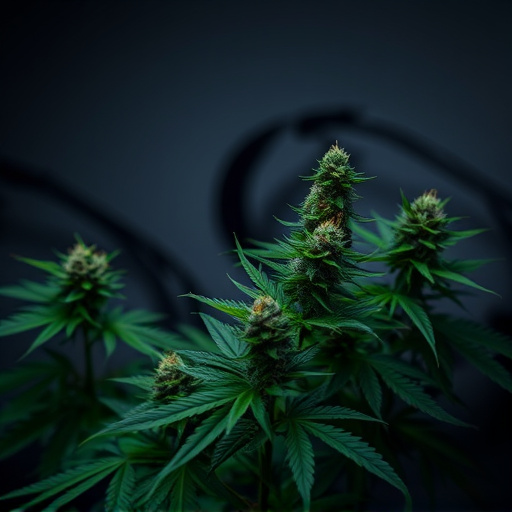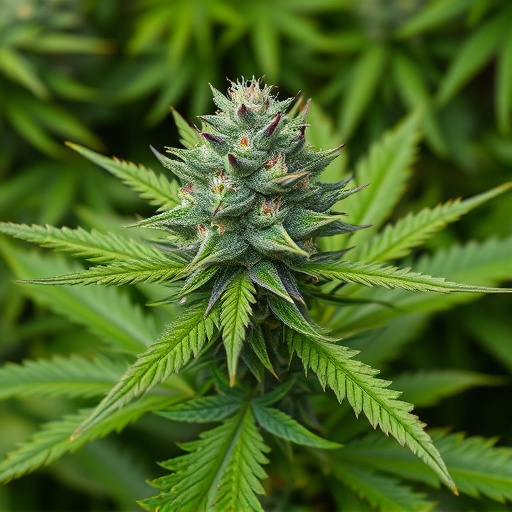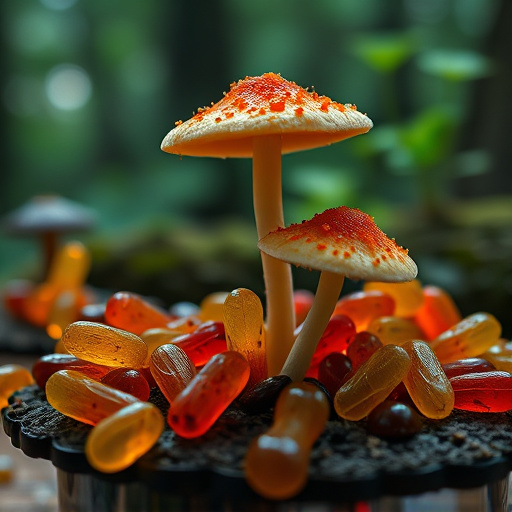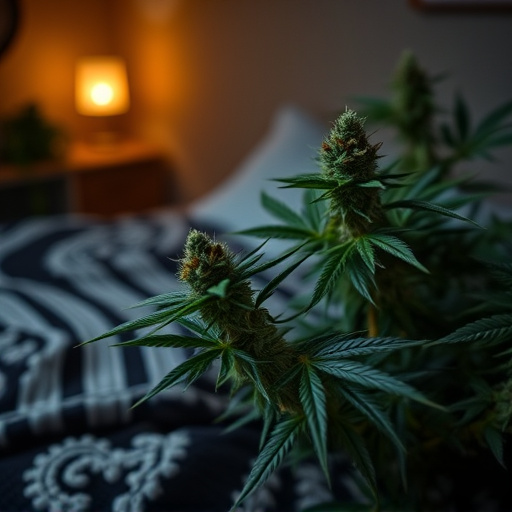Cannabis flowers offer medical benefits through their cannabinoids and terpenes, which interact with the body's endocannabinoid system to regulate functions like pain perception, appetite, mood, and sleep. High THC strains are sedative and effective for insomnia, while CBD-rich strains manage anxiety accompanying insomnia. Terpenes enhance or mitigate cannabinoid effects, creating varied experiences. Understanding these interactions allows users to choose the right cannabis strains for optimal sleep aid. Modern research supports cannabis as a therapeutic treatment for insomnia, anxiety, and pain, with evidence-based practices expected to grow as legal landscapes evolve.
Cannabis flower has gained significant attention for its potential medical benefits, particularly in treating insomnia. This article delves into the intricate world of cannabis compounds and their complex interactions with the human body. We explore how different cannabis strains, rich in cannabinoids like THC and CBD, can alleviate sleep disorders. By examining current scientific evidence, we also illuminate promising future research directions for optimal cannabis strains for insomnia management.
- Understanding Cannabis Compounds and Their Interactions with the Body
- The Role of Cannabis Strains in Treating Insomnia
- Scientific Evidence and Future Directions for Research
Understanding Cannabis Compounds and Their Interactions with the Body

Cannabis flowers offer medical benefits through a complex interplay of compounds, primarily cannabinoids and terpenes. Cannabinoids like THC (tetrahydrocannabinol) and CBD (cannabidiol) interact with the endocannabinoid system in our bodies, which plays a key role in regulating various functions including pain perception, appetite, mood, and sleep. Each cannabis strain has a unique cannabinoid profile, making some more effective than others for specific conditions, such as insomnia. For instance, high THC strains are often recommended for insomnia due to their sedative properties, while CBD-rich strains can help with anxiety or panic disorders that may accompany insomnia.
Terpenes, aromatic compounds found in cannabis, also contribute to the plant’s therapeutic effects by interacting with both cannabinoids and our olfactory system. They can enhance or mitigate cannabinoid effects, creating a wide range of experiences depending on their specific combinations and concentrations. Understanding these interactions allows users to choose the right cannabis strains for insomnia, leveraging the synergy between different compounds for optimal sleep-aiding benefits.
The Role of Cannabis Strains in Treating Insomnia

Cannabis has been used for centuries as a natural remedy for various ailments, and its modern medical application is no exception. When it comes to treating insomnia, certain cannabis strains have emerged as effective options. Different strains of cannabis contain varying levels of cannabinoids, such as THC (tetrahydrocannabinol) and CBD (cannabidiol), which are responsible for their unique therapeutic properties.
For individuals struggling with insomnia, specific cannabis strains known for their high CBD content can be particularly beneficial. These non-intoxicating strains promote relaxation without inducing a “high,” making them ideal for use before bedtime. The gentle effects of CBD help regulate sleep-wake cycles and reduce anxiety related to sleep, ultimately aiding in falling asleep faster and enjoying deeper, more restful slumber.
Scientific Evidence and Future Directions for Research

The scientific community has increasingly recognized the potential therapeutic benefits of cannabis, particularly in its flower form, for various medical conditions. Research into cannabis-based treatments has gained momentum, leading to a growing body of evidence supporting its efficacy. Numerous studies have explored the effects of different cannabis strains on insomnia, anxiety, and pain management, among other ailments. These investigations have not only highlighted the active compounds present in cannabis but also their complex interactions within the plant.
Future research directions hold immense promise. Scientists aim to further understand the diverse chemical profiles of various cannabis strains for insomnia and other conditions. This involves delving into how specific cannabinoids and terpenes interact with our bodies’ endocannabinoid system, offering potential treatments without adverse effects. As the legal landscape continues to evolve, more clinical trials can facilitate evidence-based practices, ultimately leading to improved patient outcomes and a better understanding of cannabis as a valuable medical resource.
Cannabis flower’s medical potential lies in its complex interplay of compounds, particularly cannabinoids like THC and CBD. Different cannabis strains offer tailored relief for various conditions, with specific terpenes enhancing these effects. For individuals seeking treatment for insomnia, certain strains have shown promise in clinical studies, providing a natural alternative to conventional medications. As research continues to explore the vast landscape of cannabis compounds, understanding the unique characteristics of different strains will be key to unlocking their therapeutic benefits, especially for managing sleep disorders like insomnia.














